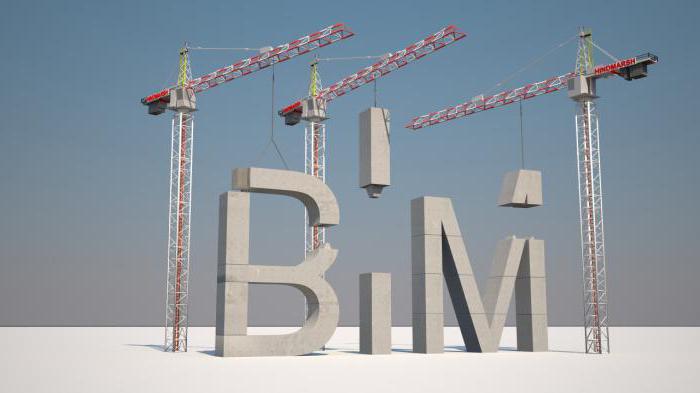Information models for managing objects are the sum of certain characteristics, including numerical and other values of these attributes. Systemology refers to an information model as a combination of certain parameters containing information about the system, phenomenon, process.

The purpose of creating an information model
Information models of object management allow you to process data about objects taking into account the relationship between them. To create automatic processing of the obtained results, a formalized description is compiled for the analyzed model, which is accessible to computer processing.

Information coding
A person has a natural need for sharing information with other people. Mostly use texts. For example, mathematical notation 2 of Newton’s law in a textual interpretation reads as follows: “The force acting on the body is directly proportional to the product of mass and acceleration of gravity”. To compose such a text, the letters of the Russian alphabet are used. English-language text involves the use of English characters. A melody can be recorded (encoded) using notes. The mathematician in the process of compiling a mathematical text uses special characters.
Texts can be considered as information models for managing objects capable of storing and transmitting important information.

Varieties of models
Language models are in demand, optimal for communication. To transfer them, you do not need to put a lot of effort, material resources. Language models that contain specially selected material are information models for managing objects. The ability to analyze information important to the object, to use it for further research, is considered an important factor to guarantee the preservation of its adequacy.
Information Model Example
Assessment of students' knowledge and skills can be considered good. an example of an information model. The essential characteristics are considered: the student's last name, the subject in question, score. Between the characteristics and the object there is a feedback created using numbers, test, signs.

Information model
Let us analyze some fundamental concepts that characterize and information models facility management. The summary of the lesson includes: object, attribute, its value.
An object is an object that exists in reality. Attribute - characteristics of the object in question. The value of the attribute is the refinement of its features (details).

Models of Information Systems
The concept of "company" means a structure in which there is a certain combination of relationships and entities. A managed object cannot be isolated; it obeys a specific set of rules. It is the information system that characterizes the rules and logic, organizes and converts information flows, automates the data processing, presents them visually in the form of reports. In the process of creating the model, a “communication language" appears for developers, consultants, company leaders, and potential users. As a result, a corporate management system is formed in which the manager and the managed understand their capabilities and responsibilities. Business logic and rules define the interaction between the individual elements. An information system is characterized by feedback, the creation of a tangible result. Consider the main parameters of the information project. It:
- identification of business goals that can be achieved by automating processes;
- definition of sites, as well as the implementation algorithm;
- Estimation of terms of deployment and full launch of the finished system;
- need for hardware and software;
- team list;
- analysis of the compliance of the selected software with the direction of the company.
Model basis
Consider information models of object management. You can take any examples of them, but the basic components are always the same:
- main business functions that characterize the specifics of the activity;
- managerial, auxiliary, basic processes that characterize the way their company performs them;
- organizational and functional structure which determines the place of performance of functions;
- the sequence (phase) of the implementation of certain stages;
- distribution of roles: "master", subordinates;
- rules that define the interaction and relationship between all parameters
Simple information models of facility management (Grade 9) help students understand the relationship between economics and science. After the business model is built, the stage of formation of the design model, its implementation, and practical use is going on.

Information Model Cycle
The practice of developing and using information systems made it possible to single out several main stages of their existence (“life”):
- identification of system requirements, analysis of information collected;
- design of subsystems, components, thinking out a full relationship between them;
- development of all elements of the system, combining individual parts into a single whole;
- test tests to analyze the functionality of the system, compliance with the goals and objectives;
- direct implementation: installation, installation, configuration, commissioning;
- regular operation taking into account the tasks assigned to the system;
- maintenance, that is, the creation of the required staff for the smooth operation of the installed information system
At the stage of determining the requirements for the system, the requirements of the customer are clarified, and disputes are agreed upon. It was at this time that all agreements reached with the customer were documented. In fact, they are looking for the answer to the question about the purpose of the information system, identifying its main functions. With the right approach to this stage, the final result of the project will be successful.
System analysis is necessary to transform abstract, general knowledge about a given subject area into clear definitions, a full description of the entire system. It is at this time that they determine and specify:
- internal and external conditions for the functioning of the information system;
- functional structure;
- distribute functions between the system and people, analyze interfaces;
- determine the basic requirements for information, technical, program elements;
- identify safety and quality criteria;
- determine the operating conditions and implementation of the finished system.
IP stages
Full management is the impact on the performance of the company, the possibility of increasing profits. There are four stages of the analysis of IP.
At the first stage, a structural analysis of the company is carried out. They conduct research on the organization of the management system, examine the functional and informational management structures, and determine the real and potential consumers of information. The results obtained at this stage are being worked out by analysts. On their basis, a generalized logical model of the initial subject area is built up, reflecting the structure, specifics of activity, as well as free information space for work. Analysts based on this material create a functional model "as is."
At the second stage of the analysis, which implies the involvement of customer representatives, independent experts, the problems of the system and ways to eliminate them are identified.
The third stage of analysis, which contains fragments of design, is to improve the generalized logical model, taking into account a specific subject area.
At the last stage, “automation maps” are developed, “boundaries” of the information system are indicated.
At the stage of analysis, the requirements for the developed information system are introduced:
- Classes of potential users and diagrams of business transactions;
- models and lists of applied processes;
- classes of objects that reflect the information model of the subject area under consideration;
- the topology of the placement of users and units to be served by the information system.
The main document, which reflects the effectiveness of the first stage, is the terms of reference for development. It contains information on the resources used, the timing of the implementation of individual stages, activities related to the protection of project materials.
At the design stage, it is important to take into account all real conditions, to make (if necessary) adjustments.
Conclusion
The success of any information project is that at the immediate time of launch, as well as throughout the entire operational period, all options function normally. With the right approach to the creation of IP, it is easy to operate and maintain, convenient for users, and guarantees the security of user data. Reliability and performance are its main indicators. Otherwise, all efforts related to the creation of an information system will be in vain.
